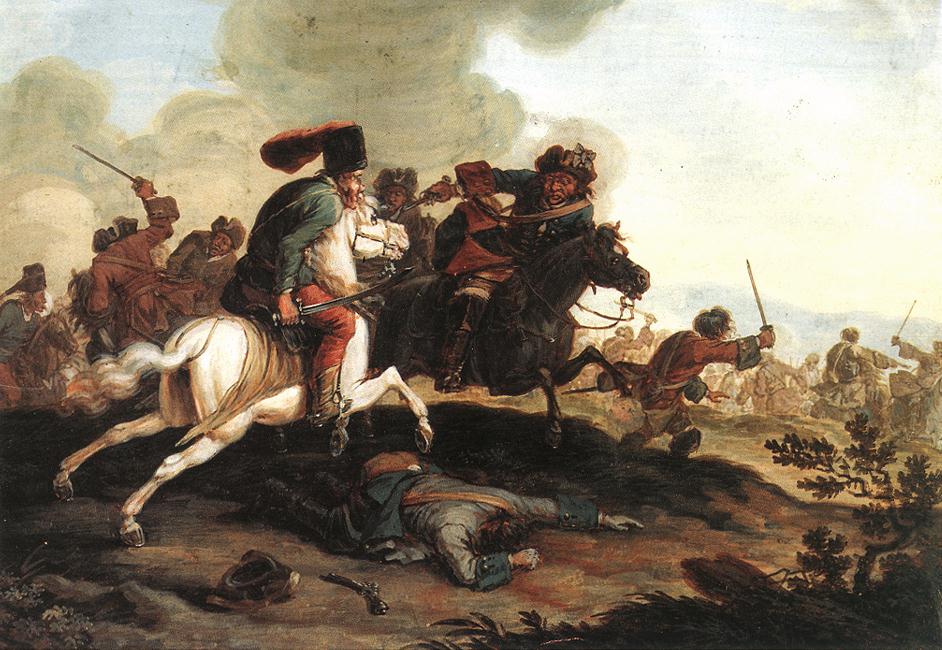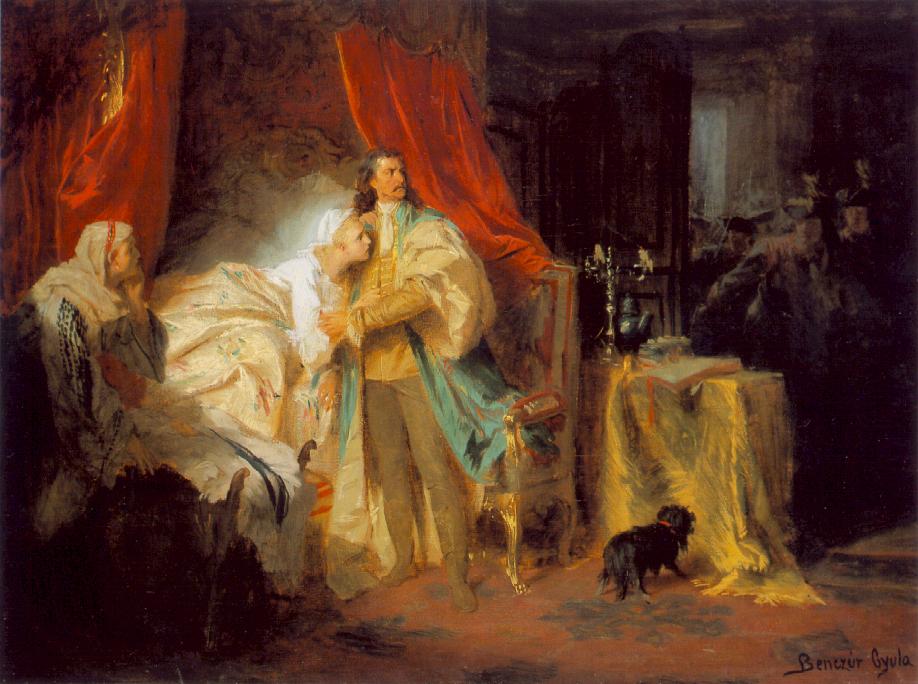|
Trenčianska Turná
Trenčianska Turná () is a village and municipality in Trenčín District in the Trenčín Region of north-western Slovakia. It has a population of about 3043 people (2008). History In historical records the village was first mentioned in 1269. The area of village on 3 August 1708 the battle between the Habsburg army of General Heister and Kuruc Army of Francis II Rákóczi took place. Trenčianska Turná merged with a neighboring village Hámre in 1976. Geography The municipality lies at an altitude of 214 metres and covers an area of 17.239 km2. Trenčianska Turná lies to the North of the Považský Inovec Mts. in the southern portion of the Trenčín Basin. Located near road I/50 connecting the towns Trenčín and Bánovce nad Bebravou. Creek Turniansky potok flows through the village. The northern slopes of the Považský Inovec Mts. are rich on mineral springs. Presence of the springs is considered as a result of circulation of groundwater Groundwater is ... [...More Info...] [...Related Items...] OR: [Wikipedia] [Google] [Baidu] |
List Of Municipalities And Towns In Slovakia
This is an alphabetical list of the 2,891 (singular , "municipality") in Slovakia. They are grouped into 79 Districts of Slovakia, districts (, singular ), in turn grouped into 8 Regions of Slovakia, regions (, singular ); articles on individual districts and regions list their municipalities. The average area of Slovak municipalities is about and an average population of about 1,888 people. * Ábelová * Abovce * Abrahám * Abrahámovce, Bardejov District * Abrahámovce, Kežmarok District * Abramová * Abranovce * Adamovské Kochanovce * Adidovce * Alekšince * Andovce * Andrejová * Ardanovce * Ardovo * Arnutovce * Báb, Nitra District, Báb * Babie * Babín * Babiná * Babindol * Babinec, Slovakia, Babinec * Bacúch * Bacúrov * Báč * Bačka, Slovakia, Bačka * Bačkov, Trebišov District, Bačkov * Bačkovík * Baďan * Bádice * Badín * Báhoň * Bajany * Bajč * Bajerov * Bajerovce * Bajka * Bajtava * Baka, Slovakia, Baka * Balá ... [...More Info...] [...Related Items...] OR: [Wikipedia] [Google] [Baidu] |
Kuruc
Kuruc (, plural ''kurucok''), also spelled kurutz, refers to a group of armed anti- Habsburg insurgents in the Kingdom of Hungary between 1671 and 1711. Over time, the term kuruc has come to designate Hungarians who advocate strict national independence and the term " labanc" to designate Hungarians who advocate cooperating with outside powers. The term kuruc is used in both a positive sense to mean “patriotic” and in a negative sense to mean “chauvinistic.” The term labanc is almost always used in a negative sense to mean “disloyal” or “traitorous”. This term originally referred to Habsburg troops, mainly Austrian imperial soldiers, garrisoned in Hungary. The kuruc army was composed mostly of impoverished lower Hungarian nobility and serfs, including Hungarian Protestant peasants and Slavs. They managed to conquer large parts of Hungary in several uprisings from Transylvania before they were defeated by Habsburg imperial troops. Name The word ''kuruc'' was ... [...More Info...] [...Related Items...] OR: [Wikipedia] [Google] [Baidu] |
Groundwater
Groundwater is the water present beneath Earth's surface in rock and Pore space in soil, soil pore spaces and in the fractures of stratum, rock formations. About 30 percent of all readily available fresh water in the world is groundwater. A unit of rock or an unconsolidated deposit is called an ''aquifer'' when it can yield a usable quantity of water. The depth at which soil pore spaces or fractures and voids in rock become completely saturated with water is called the ''water table''. Groundwater is Groundwater recharge, recharged from the surface; it may discharge from the surface naturally at spring (hydrosphere), springs and Seep (hydrology), seeps, and can form oasis, oases or wetlands. Groundwater is also often withdrawn for agricultural, municipal, and industrial use by constructing and operating extraction water well, wells. The study of the distribution and movement of groundwater is ''hydrogeology'', also called groundwater hydrology. Typically, groundwater is thought o ... [...More Info...] [...Related Items...] OR: [Wikipedia] [Google] [Baidu] |
Mineral Springs
Mineral springs are naturally occurring springs that produce hard water, water that contains dissolved minerals. Salts, sulfur compounds, and gases are among the substances that can be dissolved in the spring water during its passage underground. In this they are unlike sweet springs, which produce soft water with no noticeable dissolved gasses. The dissolved minerals may alter the water's taste. Mineral water obtained from mineral springs, and the precipitated salts such as Epsom salt have long been important commercial products. Some mineral springs may contain significant amounts of harmful dissolved minerals, such as arsenic, and should not be drunk. Sulfur springs smell of rotten eggs due to hydrogen sulfide (H2S), which is hazardous and sometimes deadly. It is a gas, and it usually enters the body when it is breathed in. The quantities ingested in drinking water are much lower and are not considered likely to cause harm, but few studies on long-term, low-level exposu ... [...More Info...] [...Related Items...] OR: [Wikipedia] [Google] [Baidu] |
Bánovce Nad Bebravou
Bánovce nad Bebravou (, ) is a town in Slovakia, in the Trenčín Region. Names The name is derived from the personal name or title Bán meaning "the village of Bán's people". "Nad Bebravou" means "above Bebrava" (beaver river).Martin Štefánik - Ján Lukačka et al. 2010, Lexikón stredovekých miest na Slovensku, Historický ústav SAV, Bratislava, 2010, . http://forumhistoriae.sk/-/lexikon-stredovekych-miest-na-slovensku The oldest inscription mentioning the town as ''villa Ben'' dates back to 1232. Other recorded names are ''Villa Ban'' (1318), ''Banowitz'' (1389), ''oppidum Banowcz'' (1439), ''Ban'' (1467), ''Banowcze'' (1471). Geography It is located at the northernmost edge of the Danubian Hills, at the foothills of the Strážovské vrchy mountains at the confluence of the Radiša and Bebrava rivers. It is 25 km away from Prievidza, 30 km from Trenčín and 50 km from Nitra. History The oldest settlement stems from the Bronze Age. The town was ... [...More Info...] [...Related Items...] OR: [Wikipedia] [Google] [Baidu] |
Trenčín
Trenčín (, also known by other #Names and etymology, alternative names) is a List of towns in Slovakia, city in western Slovakia of the central Váh River valley near the Czech Republic, Czech border, around from Bratislava. It has a population of more than 55,000, which makes it the eighth largest municipality of the country and is the seat of the Trenčín Region and the Trenčín District. It has a medieval castle, Trenčín Castle, on a rock above the city. Trenčín is chosen as the European Capital of Culture in 2026. Names and etymology Trenčín was first mentioned under the Greek name ''Leukaristos'' (Λευκάριστος), depicted on the Ptolemy world map around 150 AD . During the course of the Marcomannic Wars between the Roman Empire and Germanic Quadi, the Romans carved an inscription on the rock under the present-day castle in 179 AD and the place was mentioned as ''Laugaricio''. For a long time it was considered the northernmost known presence of the Roma ... [...More Info...] [...Related Items...] OR: [Wikipedia] [Google] [Baidu] |
Trenčín Basin
Trenčín (, also known by other #Names and etymology, alternative names) is a List of towns in Slovakia, city in western Slovakia of the central Váh River valley near the Czech Republic, Czech border, around from Bratislava. It has a population of more than 55,000, which makes it the eighth largest municipality of the country and is the seat of the Trenčín Region and the Trenčín District. It has a medieval castle, Trenčín Castle, on a rock above the city. Trenčín is chosen as the European Capital of Culture in 2026. Names and etymology Trenčín was first mentioned under the Greek name ''Leukaristos'' (Λευκάριστος), depicted on the Ptolemy world map around 150 AD . During the course of the Marcomannic Wars between the Roman Empire and Germanic Quadi, the Romans carved an inscription on the rock under the present-day castle in 179 AD and the place was mentioned as ''Laugaricio''. For a long time it was considered the northernmost known presence of the Roma ... [...More Info...] [...Related Items...] OR: [Wikipedia] [Google] [Baidu] |
Považský Inovec
Považský Inovec is a mountain range in western Slovakia, named after the Váh river. It is long and wide mountain range. It is situated from the city of Hlohovec, raising from the Danubian Hills, and slowly raising further north until nearly to the city of Trenčín where it borders the Strážov Mountains, where is also the highest hill of the entire mountain range, ''Inovec'' (1042 m). The mountain range separates basins of the Váh and Nitra rivers. There are many monuments in or near the mountain range, including Great Moravian hill fort ''Kostolec'' near Ducové, Hlohovec Castle near Hlohovec, Beckov Castle near Beckov, Topoľčany Castle and Tematín Castle. The famous spa city of Piešťany lies under Považský Inovec. Geology Považský Inovec Mts. is considered as asymmetric horst emerging from the Neogene sedimentary fill of the Pannonian Basin between the Váh and Nitra rivers. The horst is bordered by steep normal faults and usually divided from north to ... [...More Info...] [...Related Items...] OR: [Wikipedia] [Google] [Baidu] |
Francis II Rákóczi
Francis II Rákóczi (, ; 27 March 1676 – 8 April 1735) was a Hungarian nobleman and leader of the Rákóczi's War of Independence against the Habsburgs in 1703–1711 as the prince () of the Estates Confederated for Liberty of the Kingdom of Hungary. He was also Prince of Transylvania, an Imperial Prince, and a member of the Order of the Golden Fleece. Today he is considered a national hero in Hungary. His name is historically also spelled Rákóczy, in , in , in , in (, ), in , in . Although the Hungarian parliament offered Rákóczi the royal crown, he refused it, choosing instead the temporary title of the "Ruling Prince of Hungary". Rákóczi intended to bear this military-sounding title only during the anti-Habsburg war of independence. By refusing the royal crown, he proclaimed to Hungary that it was not his personal ambition that drove the war of liberation against the Habsburg dynasty. Childhood He was the richest landlord in the Kingdom of Hungary and the count (' ... [...More Info...] [...Related Items...] OR: [Wikipedia] [Google] [Baidu] |


